Dumbledore and Harry’s Horcrux: When did he know?
October 14, 2019—This week’s supplement to the podcast episode (about Horcruxes… check it out if you haven’t already) will be a little different. I’ve decided to answer a single question dancing around the Harry Potter fandom about everyone’s favorite Horcrux. I acknowledge that this is pure speculation, and, though I hope to defend my point convincingly, I could be dead wrong. If you think I am, let me know!
Dumbledore’s handling of Harry’s childhood is one of the great dividing issues of the Harry Potter books. Despite seeming to have no legal standing in Harry’s life, the Headmaster has a greater hand in his upbringing than any other adult, arguably. He is far more influential to the Boy Who Lived than the Dursleys, for whom Harry has no respect, or even Remus and Sirius, who flit in and out of Harry’s life too quickly to truly mentor him and who bow to Dumbledore’s wishes as it concerns Harry.
Dumbledore decides where Harry lives, with whom he spends breaks, what he is taught (in school and in life), and the appropriate times to dole out painful truths.
But the biggest decision that Dumbledore makes regarding the young boy is how he is to die. In Deathly Hallows, when Dumbledore tells Snape that Harry must die, Snape accuses him of “raising [Harry] like a pig for slaughter,” and Dumbledore deflects instead of denying it.
But how true is that statement, really? How long is Dumbledore planning Harry’s end? When does he first know for sure that his favorite student is one of Voldemort’s Horcruxes?
He does not find out the night of Voldemort’s first fall.
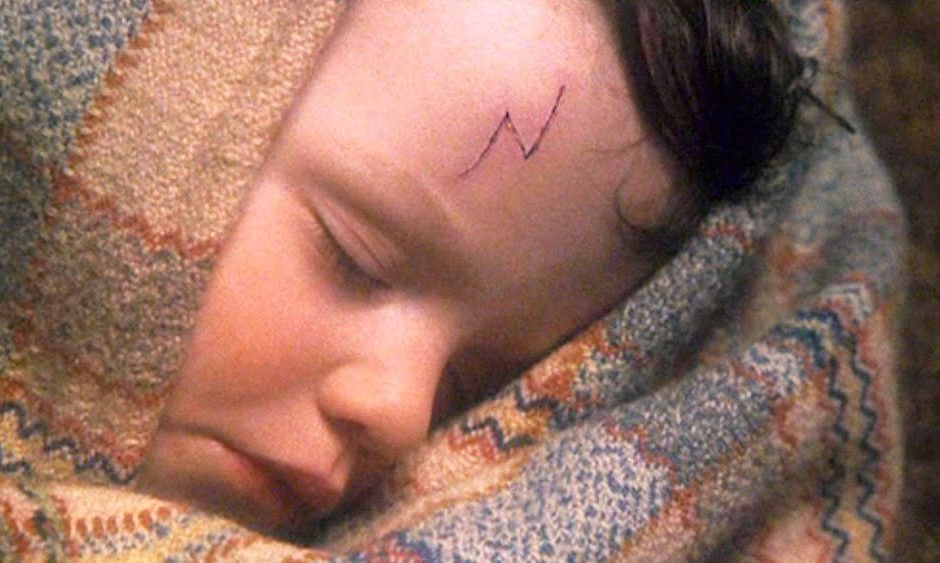
Many questions surrounding the events of Voldemort’s first fall in 1981 are answered in Deathly Hallows, when Harry gets a blow-by-blow of his parents’ deaths from inside Voldemort’s mind. What remains a mystery to this day, however, is what happens immediately after that fateful Avada Kedavra changes everything.
More than 24 hours pass between then and Dumbledore’s meeting with McGonagall, Hagrid, and Baby Harry on Privet Drive. But it can’t take Hagrid more than five hours to get from the Potters’ house in the West Country to Surrey via flying motorcycle. That’s a lot of time unaccounted for. So what, one might ponder, is happening to Harry between October 31 in the early evening and the wee hours of November 2?
Who is the first to arrive on the scene: the Ministry or the Order? (Snape’s visit is an idea that lives entirely in the movies.) How does word of the events spread so rapidly and thoroughly? Who physically takes Harry from the house? Does Dumbledore himself see the wreckage and the baby but delegate his care to Hagrid for a day to deal with the fallout of Voldemort’s demise?
Does he run tests on the baby at some point and find out about the Horcrux? Does he begin considering the child’s death when he’s only 18 months old?
I’ll admit, I don’t know the answer to many of these questions, though I could speculate all day long. I do believe, however, that Dumbledore does not find out about the Horcrux at this time.
Here are his exact words on the matter in Order of the Phoenix: “I guessed, fifteen years ago, when I saw the scar upon your forehead, what it might mean. I guessed that it might be the sign of a connection forged between you and Voldemort.”
Suspecting a destiny-fuelled connection between two prophecy-touched individuals is one thing. Surmising that an infant houses a piece of an evil wizard’s very soul within his body is an entirely different matter. At this point, Dumbledore doesn’t even know about the Horcruxes at all. (Else why doesn’t he track them down and destroy them in the decade that Voldemort is gone? It would torpedo the whole book series, but it would be much more efficient.)
No, when he observes it for the first time, I think that Dumbledore simply sees Baby Harry’s scar as both a confirmation that Harry is the child of the prophecy and a mark that fate has bound the two together.
He does not find out when he realizes Harry’s scar first starts hurting him.
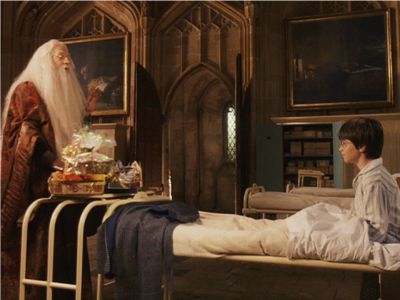
Dumbledore and Harry do not really talk about the pain Harry experiences in his scar until the later books, but it’s sort of generally accepted that Dumbledore knows about it. He probably observes Harry’s discomfort himself, or perhaps others mention it to him—it’s not exactly a secret.
Dumbledore confirms this idea himself in Order of the Phoenix: “It became apparent, shortly after you rejoined the magical world . . . that your scar was giving you warnings when Voldemort was close to you, or else feeling powerful emotion.”
So let’s assume that Dumbledore figures out the connection between Harry’s pain and Voldemort’s presence no later than the end of Sorcerer’s Stone. Some posit that this is an unmistakable sign that Harry is a Horcrux and that Dumbledore’s perceptiveness can make the leap.
Remember, though, that Dumbledore is not omniscient. It’s easy to forget, given his undeniable talent for knowing things and his astonishing powers of deduction. But Dumbledore does learn and discover and realize things throughout the Harry Potter series.
And at this point, he still does not know about the Horcruxes. So while I’m sure he thinks about the matter a great deal and comes up with a myriad of theories, it’s still more than a leap to get to “Voldemort’s soul must reside inside Harry.”
He does not find out when Harry tells him about Riddle’s Diary.
This is when Dumbledore finds out for sure about the Horcruxes, setting him on a path that he treads for the rest of his life, never reaching his destination. But I still don’t think he immediately makes the connection to Harry, at least not with certainty. There are a lot of steps he has to take before he arrives at “human Horcrux.”
- Dumbledore knows Riddle’s Diary isn’t a memory, and he immediately realizes what it truly is. He’s already read Magick Moste Evile, after all.
- I assume that Dumbledore then tries to confirm whether Voldemort is gone after the destruction of his Horcrux. Though Dumbledore suspects the Diary isn’t the only one, given that it is “intended as a weapon as much as a safeguard,” he is a thorough man. Of course, after discovering Voldemort to still be haunting Albanian forests, Dumbledore knows for sure that there must be another Horcrux.
- Dumbledore starts painstakingly collecting or reviewing old memories—from Bob Ogden, Morfin Gaunt, Horace Slughorn, Hokey, and probably many others—to discover what the other Horcrux could be.
- As Dumbledore realizes that there are multiple objects that could have become Horcruxes, he develops his 6-Horcrux theory.
- As Harry exhibits increasingly concerning symptoms (Parseltongue, more intense and frequent pains, emotional mirroring, mind sharing), Dumbledore’s theories about the cause start to get more concrete and specific, and the signs pointing him toward “human Horcrux” become larger and brighter. Certainly, by the end of Goblet of Fire, Dumbledore suspects enough to fear Voldemort’s access to Harry’s mind, so he starts icing Harry out.
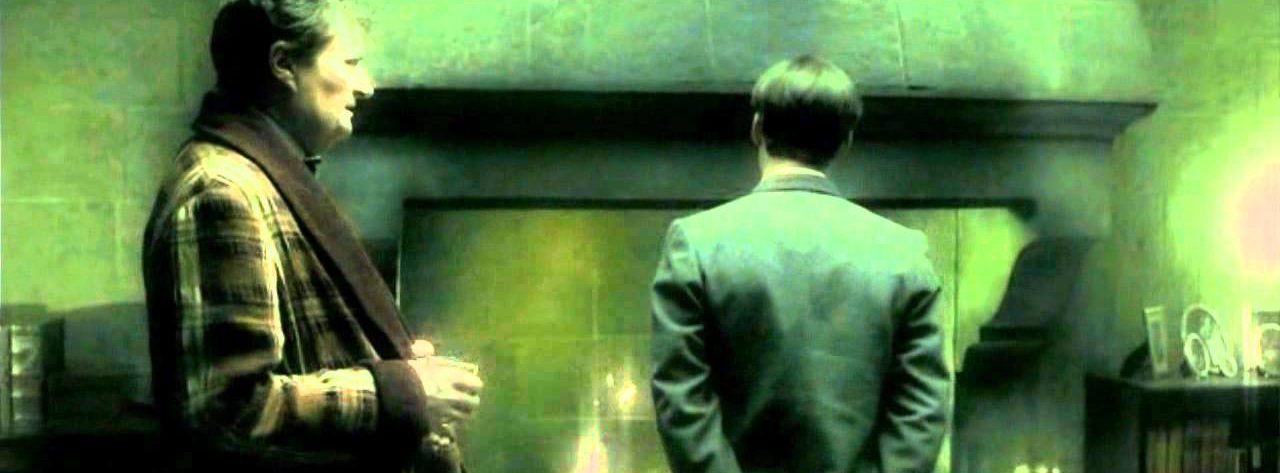
Then, just before Christmas of Harry’s fifth year…
He finds out for sure immediately after Nagini’s attack on Arthur Weasley.
This night is significant in many ways. While Harry sleeps, he enters Nagini’s mind. In Episode 6, we spoke of how Voldemort discovers his mental connection with Harry on this night, but Dumbledore makes a discovery as well, one even more important.
After Harry explains his experience, Dumbledore does something oft-forgotten and rather confusing. He prods one of his spindly silver instruments with his wand, watches it emit green smoke in the shape of a snake, and then says, “Naturally, naturally. But in essence divided?” The snake then splits into two, and Dumbledore deactivates the object.
The incident is never explained or even mentioned again throughout the series. But I believe this is the moment that Dumbledore’s suspicions about Harry turn to certainty.
JK Rowling has said that this scene depicts Dumbledore confirming that Nagini is a Horcrux, that she has two essences within her. (That idea takes on new meaning now that we know Nagini was once human and might still have her own soul alongside Voldemort’s in her body.)
Up to this point, there are still several possible causes for Harry’s connection to Voldemort. Their situation is unique, as Dumbledore points out in Deathly Hallows: “[Y]ou and Lord Voldemort have journeyed together into realms of magic hitherto unknown and untested.”
They are bound together by both prophecy and choice. They are the caster and the survivor of the first ever failed Avada Kedavra. Their wands have brother cores. Post-resurrection, they share each other’s very life-blood. There are plenty of things binding them together that could cause unprecedented magical reactions without bringing souls into the matter.
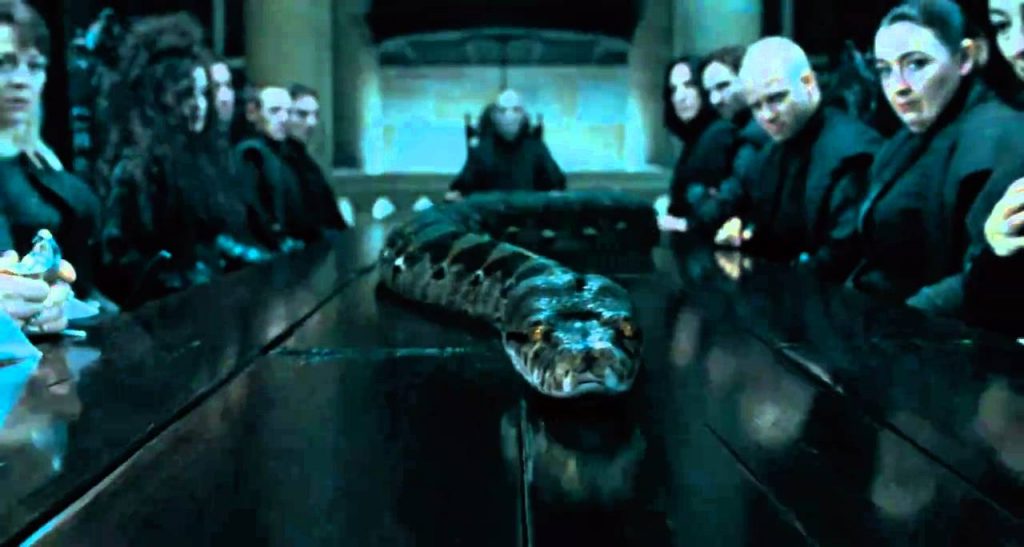
But none of that is true of Nagini. There are no wands or spells or prophecies that bind her and Harry together. The only thing that can have brought Harry to her in his sleep is the Horcrux, whose existence Dumbledore has just confirmed. It’s proof that the connection is soul-deep, a Horcrux to a Horcrux.
Does Dumbledore immediately start plotting how to arrange Harry’s eventual self-sacrifice? I don’t believe so. For all of Dumbledore’s faults, he does not believe that humans are expendable commodities, and he genuinely cares about Harry. And like I said, he’s a thorough man.
I think he spends the next several months, while on the run from the Ministry, exhausting every resource at his disposal to find another way to remove the Horcrux from Harry (and looking for other Horcruxes, but he can multitask). But by the time we see him confront the Dursleys at the beginning of Half-Blood Prince, I believe he’s come to the conclusion that there is no way to avoid Harry’s eventual death. Thus, he spends the last months of his life getting Harry ready to confront his fate.
Even if you believe Dumbledore to be a cold, heartless monster (and there are arguments to be made), you can’t possibly deny that Harry is loved and valued by his parents. Why do I bring this up?
In Deathly Hallows, in the Forest, after Harry has called his dead loved ones to him with the Resurrection Stone, not a single one of them protests his plan to walk to his own death. Lily and James Potter have literally died to keep Harry alive, and yet they calmly accept his impending demise.
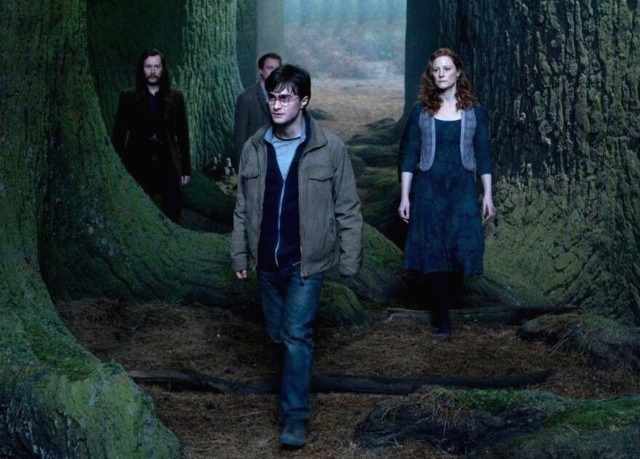
It’s fair to assume that, if Dumbledore’s decision to lead Harry to his death is premature or ill-considered in any way, the Potters would tell him to go back, that there might be another solution, that his death can’t be the only answer. And it’s very possible (though not certain) that Harry would listen to them.
But they don’t; they simply offer comfort and company as he goes to meet his end. And I think that’s very telling.
So how long is Dumbledore planning for Harry’s death? I’d argue a year at the most, and only after ruling out every other possibility for ending Voldemort’s life. Now, whether Voldemort’s death is the only way to end the war… that’s another discussion.

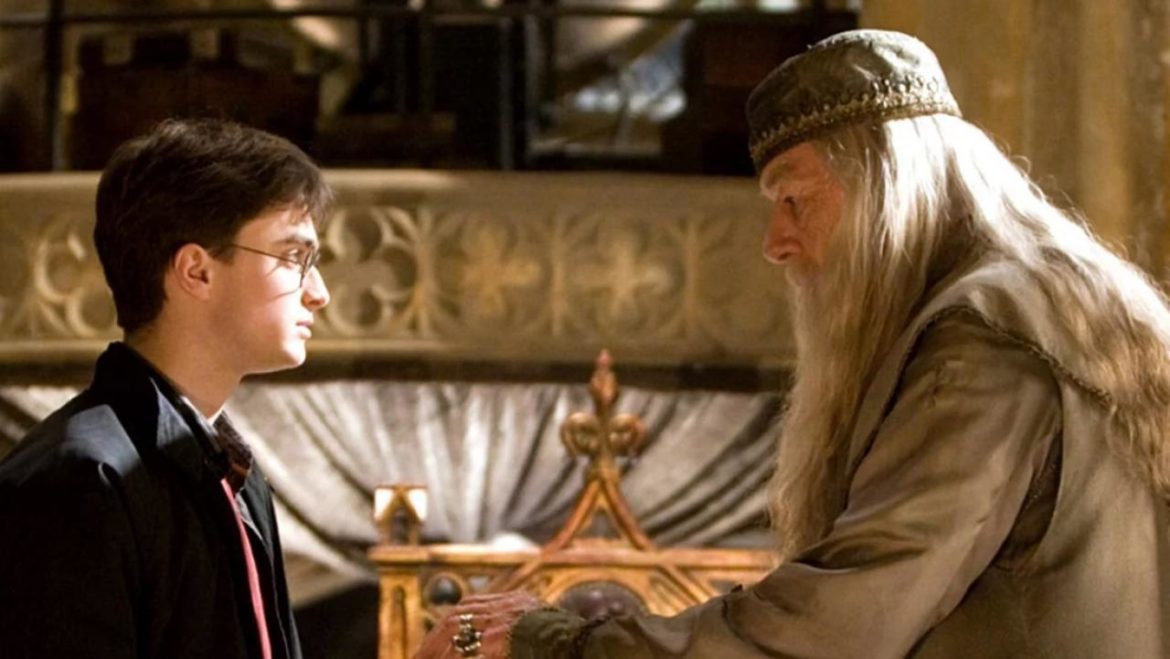
Good points and all but where all those stand with Moffin Gaund and Hokey the house elf? Could either of them could have lived up to the 80s???
Hello Tatiana,
That’s an excellent point, and one I researched while developing this post! It’s unclear when either of those two characters die, particularly in Hokey’s case (she is described as very old in Voldemort’s early adulthood, but we don’t know how long a typical House-Elf lives). It’s entirely possible that they are dead at the start of the HP series and that Dumbledore has collected their memories years or even decades earlier. If that’s the case, though, I’d argue that he collects them originally as a matter of investigating suspicious deaths around Tom Riddle, not specifically looking for Horcruxes.
Thanks so much for reading and leaving your thoughts!
Taylor